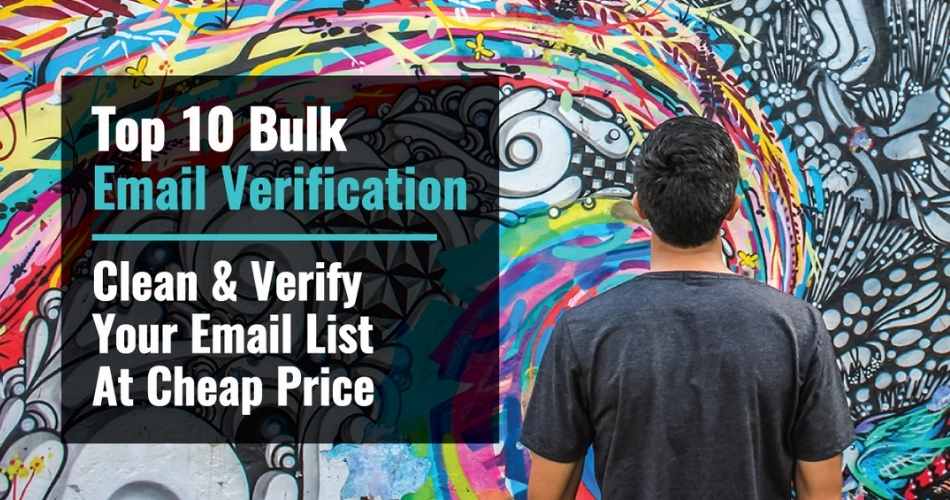While email marketing is one of the most cost effective ways to reach out to consumers, there are issues that can impact your ability to see a return from this marketing. One of these issues is when your server ends up on an email blacklist.
An email blacklist is a database of IP addresses, domains or email services that are known or at least suspected of sending spam emails. There are several different email blacklists and they all have different criteria and methods for detecting spam and adding IP addresses to the list. When an email is sent from one of the blacklisted servers, it will not be delivered to inboxes that are covered by a spam filter that uses the specific blacklist.
Also Read: Why IP Address is Blacklisted and How to Remove IP from Blacklist?
Since landing on an email blacklist can significantly impact your return, it is critical for email marketers to know how to avoid them and get removed from one of these lists if your server happens to get blacklisted. Sometimes it’s as simple as using a verified email list.
Common Reasons for Blacklisting
While every email blacklist has its own criteria, there are some common factors that can lead to a server getting blacklisted. The following are a few of the most common reasons why a server might end up on a blacklist:
Spam Complaints
If the emails from a sender receive a high number of spam complaints, that can land the server on a blacklist. Usually these complaints come from recipients marking an email as spam in their inbox. For the most part, a high complaint rate is a good indicator of a spam sender, but it can occasionally result in a legitimate sender getting flagged.
Server or IP Reputation
If you are sending emails from a shared server, your reputation can depend on the actions of the other people and organizations using the server as well. If one of them is sending spam emails, the entire server could get blacklisted. In this situation, your emails would get flagged as a result of the activities of other senders on the server.
List Hygiene
Every email marketer is going to deal with some bounced emails. A relatively low rate is not a problem, but if it reaches a certain threshold, an email blacklist might designate you as a spam sender. Many blacklists even have trap email accounts that have no person behind them. The idea is that no legitimate sender would be sending emails to one of these accounts. If the blacklist detects enough emails coming from a server to one or more trap accounts, the sender will be listed as spam.
What to Do If You Are on a Blacklist
If you suspect that you are on a blacklist, the first thing you are going to need to do is determine whether you are listed and which lists you might be on. For most of the public blacklists, you can simply contact the service and find out whether your server has been blacklisted.
Most email blacklists have a process for removing legitimate servers that were wrongly added to the list. However, before you start working on the removal process, you might want to take some steps to address the issues that got you on the list in the first place.
Fortunately, most email blacklists publish the guidelines they employ for adding servers to their lists. Go to the site of the blacklist in question, review the guidelines and try to identify the issues that may have gotten you put on the blacklist.
Once you have addressed any issues, you can then go to the blacklist service and start following the procedures for getting removed from the list.
How to Avoid Getting Blacklisted
Getting removed from a blacklist is good, but it is better to avoid getting blacklisted at all. While it is possible to get blacklisted even when you follow email marketing best practices, the following tips can help you to avoid email blacklists altogether.
Have Subscribers Opt-in
Only send emails to people who signed up for your email list. Have an opt-in form for your subscribers and don’t send emails to bought lists.
Check the Quality of Your Content
Some blacklists also look for clues in the content when making a blacklist. If you want to avoid getting blacklisted, you should check the spam score of your emails before sending them out.
Verify Email Addresses
Beyond the opt-in form, you should also have subscribers verify their email accounts. It is an added step to the sign-up process, but it’s a good way to keep your bounce rate low while helping you avoid email blacklists.
Clean Your List
Even if you build your list the right way, some email addresses will go dormant or be shut down after a while. You should regularly check your bounce and open rates to identify email addresses that are no longer in use. When you see there has been no activity from an address for a long time, remove it from your list.
Landing on an email blacklist can feel like a big hit to your marketing efforts. While it’s never a good place to be, there are ways to remove your company from email blacklists. The above tips should help you ensure your emails are delivered every time!

































